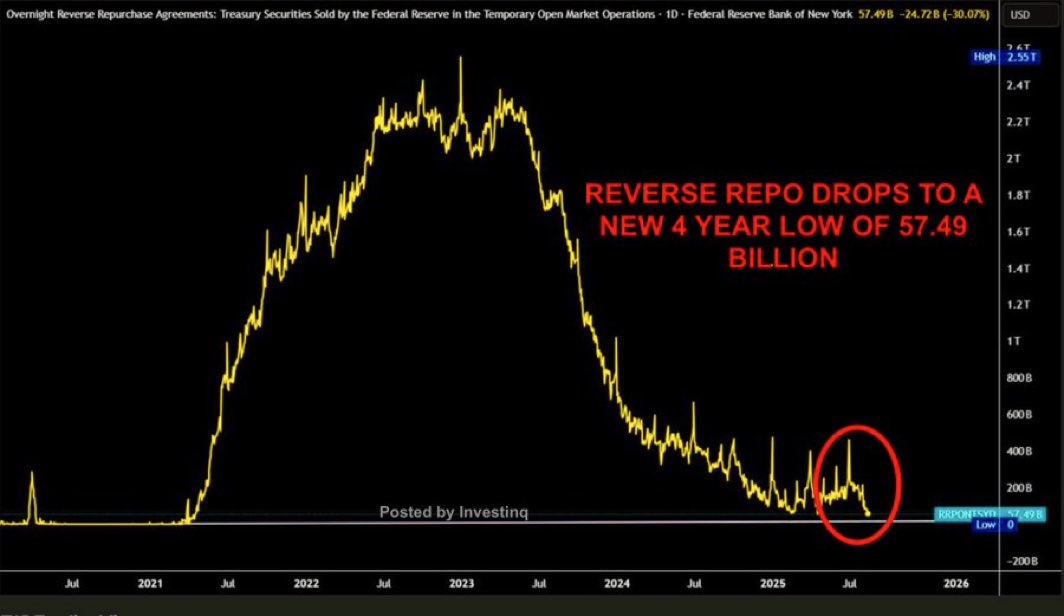The Fed’s Liquidity Cushion Is Vanishing — Brace for Impact When the Tank Runs Dry
The Federal Reserve's emergency buffers are draining faster than a crypto bull's portfolio during a margin call.
Liquidity Evaporation Accelerates
Reverse repo facilities shrinking, bank reserves declining—the plumbing of the financial system shows strain. Traders watch the Treasury General Account like hawks, knowing every billion drawn down brings us closer to the edge.
Market Implications
When the Fed's backstop diminishes, volatility spikes. Short-term funding markets twitch, basis trades unwind, and suddenly everyone remembers why liquidity matters. The system runs on confidence until it doesn't.
Digital Asset Angle
Bitcoin doesn't care about the Fed's balance sheet—that's the whole point. While traditional markets sweat over every basis point, crypto markets operate on different fundamentals. Decentralized liquidity protocols already handle what central bankers struggle to manage.
Because nothing says 'sound monetary policy' like crossing your fingers and hoping the overnight markets behave.
Experts Warn as Federal Reserve Reverse Repo Drops to a 5-Year Low
Malone Wealth founder Kevin Malone noted the decline, warning that the “excess cushion” in financial markets is vanishing.
BREAKING NEWS: Federal Reserve Reverse Repo drops to the lowest level in 1,596 days. What happens tomorrow? pic.twitter.com/Fv5TL9yObS
— Kevin Malone (@Malone_Wealth) August 19, 2025He explained that once the RRP is empty, every new Treasury issuance must be absorbed directly by private buyers rather than being offset by cash parked at the Fed.
That shift, he said, will likely push bond yields higher while forcing banks, hedge funds, and money market funds to compete harder for funding.
“The bottom line is that liquidity flowing from RRP into markets has been supportive until now. But when it reaches NEAR zero, there’s no cushion left. That’s when financial conditions tighten significantly,” wrote Malone.
Others hold that the Fed’s failure to intervene will lead to problems in markets, banks, and possibly even government funding.
Bruce, Co-Founder of Schwarzberg, tied the RRP decline to broader risks for stocks, bonds, and Bitcoin. He explained that the $2 trillion in excess liquidity built up during the pandemic had acted like momentum, sustaining markets even as interest rates rose.
However, with that liquidity nearly exhausted, the underlying fragility is exposed.
“This is bad in the short term for stocks, bonds, and Bitcoin…The US bond market is the most important market in the world. If the RRP now drops out as a buyer, bond yields will continue to rise. The Fed will likely have to step in and save the bond market by providing new liquidity,” Bruce warned.
Meanwhile, Joseph Brown of Heresy Financial highlights how the Treasury continues to ramp up short-term borrowing despite the RRP running dry.
He estimated that an additional $1.5 trillion in bills could hit the market by year’s end.
“Treasury is betting that rate cuts will come soon and provide a band-aid,” Brown said.
Meanwhile, some see the liquidity crunch as a prelude to the next phase of monetary easing. Crypto analyst Quinten argued that quantitative easing (QE) and fresh money printing will become unavoidable once the RRP balance hits zero.
“Federal Reserve’s Reverse Repo Facility is plummeting. QE & money printing will start aggressively when this drains to 0. Bitcoin will explode,” he predicted.

the liquidity engine that quietly propped up markets for years sputters, the Fed faces a narrowing path between rising funding costs, surging Treasury supply, and market stability.
The next act may involve bond market turmoil, emergency easing, or a bitcoin rally, all of which hinge on how quickly the last drops of the RRP dry up.

